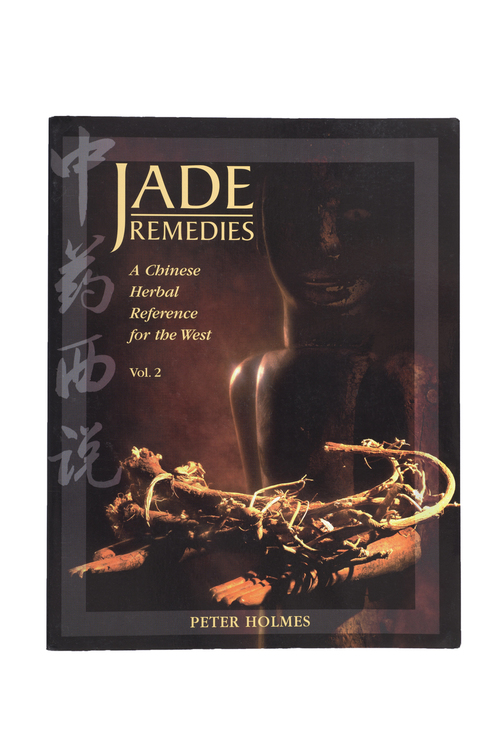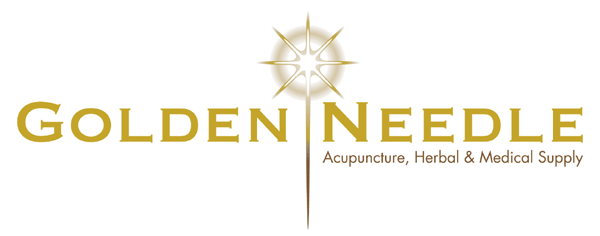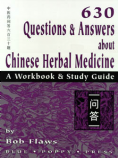Jade Remedies: A Chinese Herbal Reference for the West Vol. 2 by Peter Holmes

Jade Remedies: A Chinese Herbal Reference for the West Vol. 2 by Peter Holmes
| SKU | RW166 | |
| Brand | Snow Lotus Essential Oils | |
| Unit Size | 962 pages | |
| Description | 8 1/2" x 11", 962 pages, over 350 plant line drawings Vol. 2: ISBN 1-890029-29-7 Jade Remedies is a comprehensive, detailed and contemporary reference source for the remedies used in Oriental herbal medicine. Based on many years of research into historical and modern sources, it presents over 450 plant, mineral and animal remedies used worldwide in Chinese medicine. The remedies are divided into four types; Jade Remedies represents three 'firsts.' One, it spells out clearly and concisely the functions and uses of Chinese herbs in easily-understood Western terms. Two, it summarizes, distills and evaluates the modern pharmacological uses of Oriental remedies by Western medical doctors in East Asia. Three, it may be the first published text that organizes the Oriental materia medica according to Western body systems rather than the traditional energetic treatment categories. The information on these remedies sought by the student, practitioner or researcher unfamiliar with Oriental medicine is immediately available. As a Western rendition of the Oriental materia medica, Jade Remedies represents a much-needed complement to the standard Oriental version (whether in the Western or Chinese languages). Nevertheless, for each remedy the text retains the traditional usage by symptom picture, or pattern of disharmony-indications familiar to Oriental practitioners. By including Western and Oriental information side-by-side, it forms a valuable bridge between Western and Oriental pathology and herbal therapeutics, allowing practitioners of both systems to better understand each other's therapeutic rationales. Jade Remedies is an invaluable and unique resource for those wishing to enhance their health, for those being treated with Oriental medicine, as well as for all students and practitioners of the healing arts. Book Review by Alex Berks, L.Ac. Jade Remedies: A Chinese Herbal Reference for the West by Peter Holmes is an important book in the development of Chinese medicine and a great clinical reference. The genius of this two-volume materia medica is its application of terminology that bridges the syndromes of Chinese medicine with the terms of Western pharmacology so that each informs the other. The actions, indications and chemical constituents of the herbs in Western terms elucidate the broad Chinese symptom pictures, and the symptom groupings of Chinese medicine syndromes help make the precise information of Western pharmacology more clinically useful. These volumes are about drawing together the ancient and the modern and the East and the West. To do this, Holmes makes links between herb actions and treatment strategies, between pharmacology and therapeutics and between plant chemistry and pharmacology. The result is that the author is able to make a large amount of scientific information available in relation to traditional uses without reducing the Chinese syndromes to facile and clinically useless actions. Where applicable, Holmes also relates the Chinese herbs to similar Western counterparts. He's had his eye on translating herbs from one tradition to another for quite some time. This is his second major cross-cultural pharmacopoeia reference work. The first was The Energetics of Western Herbs: An Herbal Reference Integrating Western and Oriental Medicine Traditions. This two-volume opus presents the pharmacopoeias of Western herbal traditions with the symptom pictures of Chinese medicine. In essence, Jade Remedies is a continuation of The Energetics of Western Herbs. For the Western practitioner unfamiliar with the language of Chinese medicine, Jade Remedies is organized according to Western anatomical systems. By doing this, Holmes is able to skirt the problems of explaining concepts unique to Chinese medicine. For example, the function of the Chinese concept of Liver shares little similarity with the Western liver and essentially describes nervous system pathology. Therefore, an herb like Bupleurum Chai Hu that spreads Liver qi is placed in the "Nervous sedative" class, more appropriate to its primary Western action. The Chinese symptom picture of Bupleurum Chai Hu is referred to as: "Qi constraint with nerve excess" - feeling stressed, unrest, chest pain and tightness, menstrual pain, headache, painful digestion with bloating, allergies. Holmes continues in his thorough description. This is one of nine Western indications for this herb. Its other actions are: hypotensive; antipyretic; anti-infective, antiviral, anti-bacterial, interferon inducent; immune regulator, anti-allergic; liver protective; radiation protective; pituitary-adremocortical stimulant; astringent, antiprolapse. Each indication itself contains an explanation. At the same time, the text also includes the traditional Chinese syndromes, in the case of this remedy: Gallbladder fire and Shao Yang heat. A Notes section following each herb highlights the common use and explains mode of action and modern applications. This section makes the book a must read for the student who needs to find "handles" to hold the herbs in his/her mind. One's image of an herb's function changes when its class is reorganized. The new organization provides therapeutic knowledge that localizes the herbs' functions. We begin to think of them in terms of body system functions rather than purely energetic functions. For example, Cinnamon Rou Gui is classed in the "Cardiac stimulants" instead of the more traditional "Interior Warming." Jade Remedies' listing of Chinese syndromes is even more complete than Bensky and Gamble. The additional information makes the text expansive and thought provoking. Holmes assigns extra vessel channel affinities where appropriate (for example Bupleurum Chai Hu has affinity to the Yang Wei channel) and assigns qualities such as moistening and drying that go far beyond the Bensky presentation. This materia medica is an important contribution to herbal medicine. It pulls Chinese medicine out of its timeless mindset as an ancient, imperially sanctioned system of classical medicine to a viable system of health care for the West. Allopathy needs the therapeutic potentials of Chinese medicine to more effectively treat chronic and degenerative diseases. Chinese medicine needs a language for the West that scientifically validates it. This materia medica is most probably the first that preserves the soul of three-thousand plus years of vitalistic art/science in a way the West can use. It is for this feat that Jade Remedies becomes an indispensable reference source and will earn this book and its author a place in history. Book review by Martha Moore, Herbalist, A.H.G. Jade Remedies: A Chinese Herbal Reference for the West For example, it explains the difference between the herbs used to treat Liver conditions in Chinese medicine and the herbs for liver conditions in Western medicine. The two are entirely different because the Chinese medical Liver pathology largely consists of functional neurological and endocrine disorders-not, as we've come to expect, liver pathology. The confusion lies in the use of the word 'liver' for two entirely different systems of pathology. One is physiological while the other is energetic. It's a real semantic problem that clouds an accurate understanding of Chinese medicine. Of course, this profoundly changes the way that the Chinese herbs are classified. Jade Remedies subdivides the herbs for each body system into four basic types: restoratives, relaxants, stimulants and sedatives. This is based on the nineteenth century Physiomedical and Eclectic classification of herbs by doctors such as Scudder, King and Ellingwood. Holmes uses this Western vitalistic classification to link the traditional Chinese herb uses (whose original usage is completely embedded in vitalistic practice/terms) with modern, research based uses. These issues and his procedure for reclassifying the remedies is discussed by Holmes in several elegantly written and intellectually stimulating introductory chapters. Jade Remedies is an excellent manual for both study and clinical use. It provides easy access to accurate, reliable and often referenced information for both the traditional and contemporary uses of Chinese herbs. For example: All these features make Jade Remedies very helpful for anyone using Chinese herbs. This is especially true at this time when Chinese medicine is making such a huge transition to the West. However, Holmes is careful not to throw out the baby with the bath water. He also preserves the traditional symptom pictures (or syndromes) for which the herbs are traditionally used. This allows the reader to make connections between the pharmacological information and the syndrome application for each herb. This book is a creative, fresh approach that ultimately serves to promote a dialogue if not a working synthesis between the Western and Chinese herbal systems. In that light, Jade Remedies is essentially an exploration in herbal integration, or a 'cross-cultural' herbal. All in all, it is an extremely useful and timely text that consolidates a vast amount of research. It is an essential resource that every herbalist or health-care practitioner who wants to understand and use Chinese herbal medicine should have on their bookshelf. |
|


